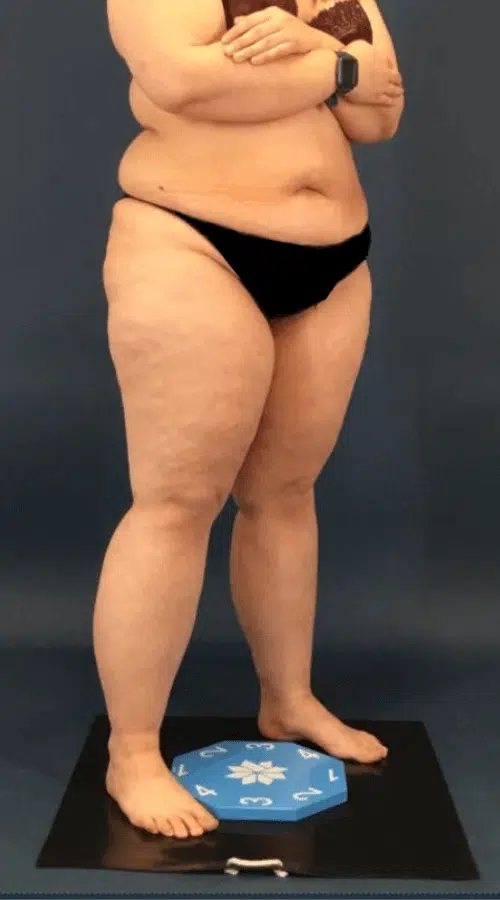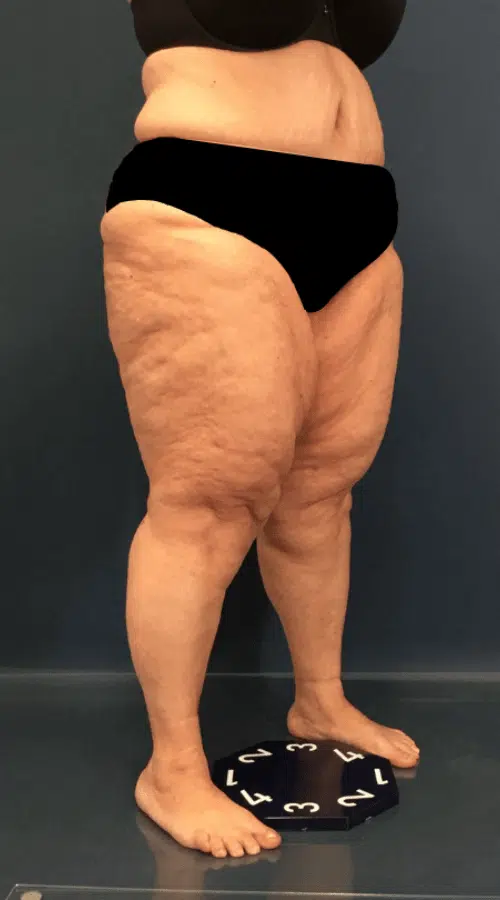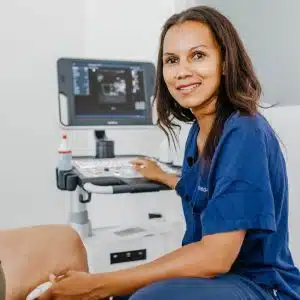WHO officially recognizes lipedema as a disease
Living with lipedema can reduce the quality of life to such an extent that its definition as a disease has recently been accepted by the WHO. Through the efforts of international experts, lipedema has finally been given an ICD (international cluster of diseases) key at the World Health Organization (WHO). This key is the basis of a globally recognized disease.
Dr. Labschies, as a specialist in surgical therapy, was asked to present the requirements for lipedema operations. The core statement of Dr. Labschies was: “The knowledge of the complexity and the required individuality in lipedema operations is a fundamental building block for the understanding of surgical therapy in lipedema”.
The topic of lipedema is developing worldwide in rapid steps, and we will also be able to gain a lot of new scientific knowledge in the next few years. med-plast and Dr. Labschies are continuously committed to exchanging and passing on scientific and clinical knowledge about the clinical picture of lipedema.

Dr. Labschies (3rd from right) at the WHO Lipedema Expert Meeting in Geneva (2019), next to Prof. Michellini (2nd from left).
Lipedema stages



- Stage 1: still smooth skin, only little volume, firm connective tissue, pain. Little inflammation without palpable resistance.
- Stage 2: more skin over more fat volume, loose connective tissue, pain. More inflammation with palpable nodules.
- Stage 3: very much skin over very much connective tissue. The volume of fat is often no more than in stage 2. Severe inflammation with very painful nodule formation.
- Stage 4: controversial and only theoretically relevant: Added lymphatic congestion of the hands and feet due to lipedema.
How is lipedema diagnosed?
The diagnosis of lipedema results from the overall picture of the current symptoms, the previous course and the physical examination.
It is purely clinical, which means that it depends on what we
- see
- feel
- and be able to exclude them.
You can often see the typical disproportion, i.e. emphasis of the excess volume on the legs and arms, with at the same time often less involvement of the middle of the body. However, according to our experience and scientific knowledge, lipedema can affect the entire body. It appears symmetrically and begins on the legs, usually above the ankles. On the arms, it often starts at the wrists with visible demarcations.

We can feel the distended fatty tissue and its pressure pain. This comes from the combination of pressure and inflammatory processes. Too many fat cells, all of which can grow to a maximum size, fill the typical anatomical spaces such as the inside of the knee, the outside of the thigh or the triceps region on the back of the upper arm. Due to the increased cell cycle in lipedema with a shorter lifespan of the individual fat cells, the subsequent increased breakdown of the fat cells leads to activation of the immune system with sometimes very strong inflammatory reactions. These are often palpable as painful nodules in the lower abdomen.

We need to rule out other possible causes such as varicose veins, which can also promote painful swelling. We can do this using ultrasound and Doppler sonography. It is a misconception that lipedema fat cells can be made visible by sonography. It is not even possible to clearly distinguish lipedema tissue from normal fat tissue using ultrasound. Varicose vein diagnosis, lymphoedema and the detection of hernias in the operating theatre area can be excellently identified using state-of-the-art ultrasound technology. Furthermore, we can measure and document the changes caused by our lipedema operations by measuring the thickness of layers in defined areas.

The increased and enlarged fat cells in lipedema can lead to pain even in the earliest stage 1 – and in the further course in lipedema stage 2 to possible movement restrictions with serious secondary diseases such as high blood pressure, diabetes, cardiovascular diseases or orthopedic complaints. From stage 3 onwards, skin hangs over skin, which leads to further dermatological problems and in the course of time can only be remedied by tightening operations.
Frequently asked questions about lipedema diagnosis
Which figures about lipedema are correct?
Lipedema is a highly prevalent condition. In the USA alone, 17 million women are said to be affected, and 370 million worldwide. The disease lipedema is accompanied by considerable physical and psychological suffering because it is still largely misunderstood by society and leaves little hope for improvement through conservative treatment options.
What is the cause of lipedema?
The cause lies in genetics, whereby the relapsing changes are accompanied by hormonal fluctuations. This is why lipedema almost exclusively affects women. Men can be genotypically hereditary carriers for lipedema but are protected from phenotypic formation due to the lack of female hormonal fluctuations. We therefore see under 1% men in our med-plast clinic.
How is lipedema triggered?
Lipedema is usually triggered by changes in the female hormone balance. In connection with puberty, pregnancy or menopause, those affected often experience episodic increases in fatty tissue. According to our latest findings, these can affect the entire body. However, the first symptoms most frequently appear on the legs and arms. Lipedema can considerably impair the individual’s quality of life due to pain, movement restrictions and physical changes. We see psychological instability, social exclusion and a lack of support due to the ignorance of many doctors every day.
What form does lipedema take?
Every person affected is unique. Lipedema can occur in all its different manifestations. Also, in all stages or types. The transitions are fluid and the distributions and affected body regions are highly variable.
Where does the pain of lipedema come from?
Since lipedema is an abnormal accumulation of fat cells that multiply and increase in size during the course of the disease, but cannot reduce their volume, the typical complaints such as pressure, pain and a feeling of heaviness occur. The increased breakdown of the excess fat cells also leads to painful inflammatory reactions.
What is the most common course with lipedema?
In the course of this, there is initially only a general increase in volume and weight. When the volume exceeds the limit, painful impairments occur in typical areas of the body. These often include the inner knees, outer thighs and upper arms first.
What recommendation can I expect from you?
The focus is on a holistic view of your situation. After the most detailed discussions and examinations, we can make a good assessment from our side as to whether and how we would operate on your individual situation.
GOOD TO KNOW
According to our experience and scientific findings, lipedema can affect the entire body! Different distribution and expression patterns occur. With different distributions and degrees of severity, this results in highly individual situations with lipedema. The complaints that lead to the indication for liposuction for lipedema are always in the foreground.

Unfortunately, people affected by lipedema are often insulted. Picture: Carina Gorny
Many people are still not sufficiently familiar with the clinical picture of lipedema. Doctors often only hear the word lipedema after their training. Even in the subsequent further training to become a specialist, the clinical picture of lipedema is often not taken into account. Even those specialists who deal with thick and painful legs on a daily basis, such as angiologists and phlebologists, often lack understanding when the topic of lipedema is brought up. Why? Because there is simply a lack of knowledge and experience in dealing with this clinical picture on a daily basis.
In the meantime, lipedema is considered a widespread disease by us specialists who deal with the topic all day long.
Because an unbelievable number of women suffer from a reduced quality of life with lipedema.
According to studies, it takes as long as 10 years for half of all affected women to be diagnosed with “lipedema” despite clear symptoms.
GOOD TO KNOW
In our lipedema clinic in Berlin, most of our patients come to the consultation already very well informed. They come on recommendation, usually already have experience with conservative therapy using MLD + flat knitting and are well networked. In this way, a real med-plast community has built up, which also exchanges and supports each other excellently. The complaints that lead to the indication for liposuction for lipedema are always in the foreground.
How does an initial consultation with med-plast work?
A comprehensive consultation and a thorough physical examination will not only give you certainty about your situation and a clear lipedema diagnosis (“yes/no”), but also show you a realistic and clear perspective. Because once we have established our common goal – the best possible increase in your quality of life – then experience shows that a positive basic attitude immediately presents itself in addition to relief.
You will finally be able to understand your situation better, because we will explain what we see and feel. Together we will be able to assess whether and how we can help you through our operations.
We do nothing else – trust us!
Anamnesis - a first acquaintance
We take time for you! As a rule, our counselling sessions for the initial diagnosis of lipedema last one hour, during which we listen to you and evaluate your situation holistically in an intensive conversation. Often it is simply a question of “Do I have lipedema?„ or we want to confirm an already existing “diagnosis of lipedema” in the sense of a second opinion. As a rule, however, we talk to very well-informed patients who have already had their experience with conservative therapy and are interested in alternative treatment options.
The development and course of your complaints are of central importance. For example, we are interested in the first episodic changes in your physical situation due to hormonal changes, such as puberty, taking the pill or pregnancies. We also want to assess your situation in relation to your general state of health. What about other diseases, previous operations, medication or allergies? Is there a genetic relation, for example due to the appearance of your mother? What effects does lipedema have on your psyche, your self-esteem, and your sexuality? Do you feel socially excluded and suffer from depression?
You will be surprised how clearly; we assess your situation! Whether for or against lipedema surgery, we will explain it to you!

Do you have an indication for lipedema surgery?
A VERY SIMPLE TIP IN ADVANCE:
Our experience shows us that the excitement before such a talk and the limited concentration during the intensive talk makes you forget a lot. Why not bring your partner, family member or best friend with you to our counselling session? This way, you can later review the conversation and the associated key statements together.



